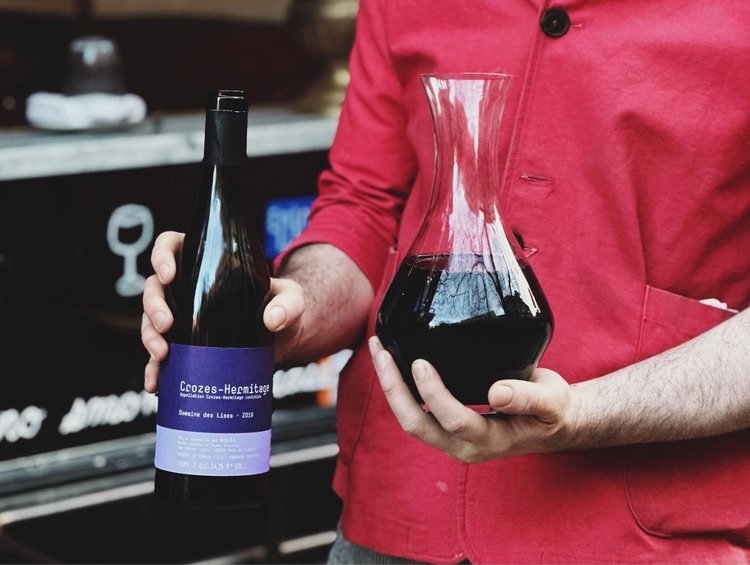Decanting
Decanting is performed for two reasons: 1) for aeration and 2) for separating the wine from its sediments.
Sedimentation can occur in wines when tannins solidify and settle. This can be from aging and/or lack of fining and filtration. (Wine crystals, also known as tartrates, are different in that they usually occur in white wines and can be formed from inconsistent cellaring and unstable temperatures).
Wines that benefit from aeration: Wines that have grippy tannins (ie, Côte Rôtie), wines that have reduction (ie, certain white or red Burgundy; natural Rhône Valley producers), some even claim that decanting Champagne can be beneficial, though this is still an uncommon practice.
Wines that benefit from separation of sediments: Wines of older age (ie, old Bordeaux 10+ years).
To decant you will need a clean decanter that has been polished and dried off. You will also need a source of light such as a candle or flashlight that can stand upright. Pour the wine into the decanter with the bottle held over the light so that you can see through the glass. If you detect visible sediments, make sure that these do not get poured into the decanter. If there are no visible sediments, pour the wine into the decanter.
Double decanting can be performed if the wine needs a more aggressive aeration and if you desire to present the wine in its original bottle. In this case, clean the bottle with some sparkling water if there are any sediments. Insert a clean funnel into the neck of the bottle and pour the wine off to the side of the funnel. If you see a whirlpool effect with the wine not overflowing, that means you are pouring it correctly.
Decanters should only be cleaned with hot water and/or a neutral alcohol such as vodka. Cleaning decanters with detergent can leave residual aromas and will impact the wine negatively – therefore, avoid putting decanters through the dishwashing machine.

